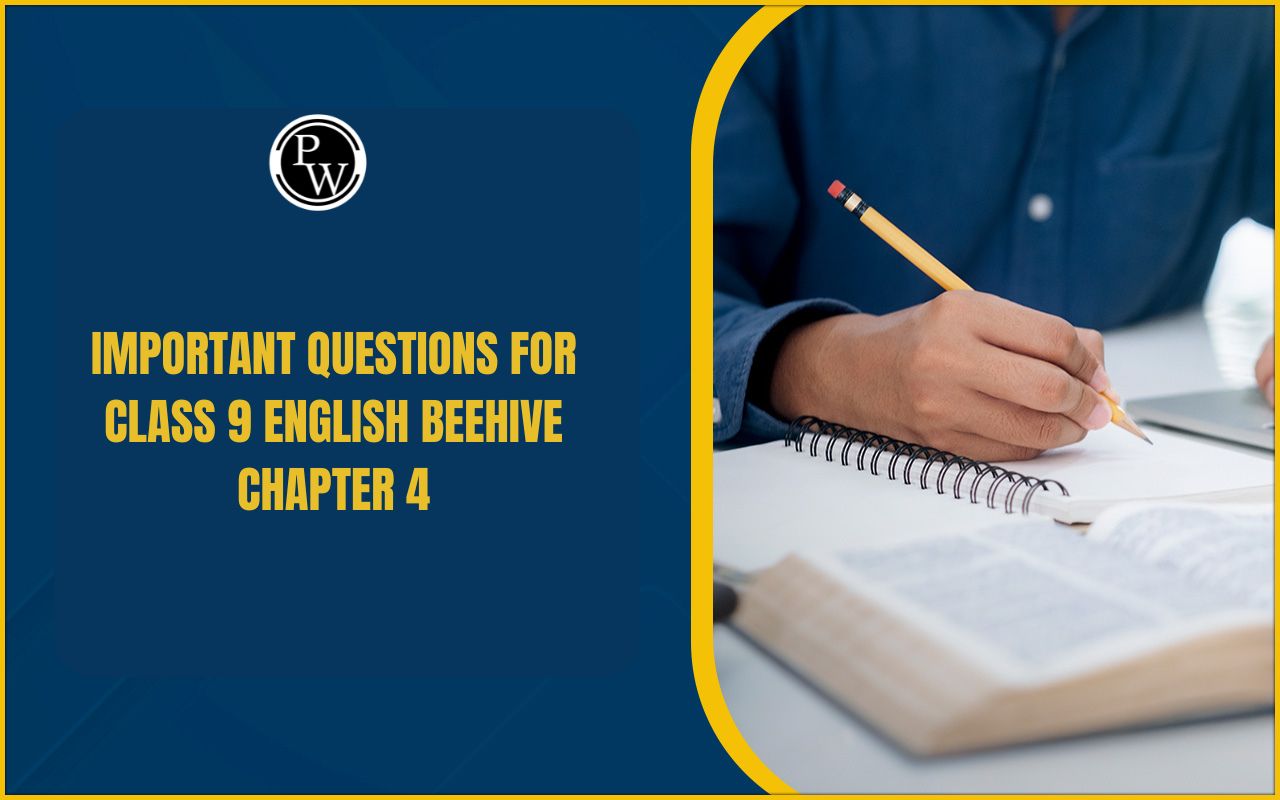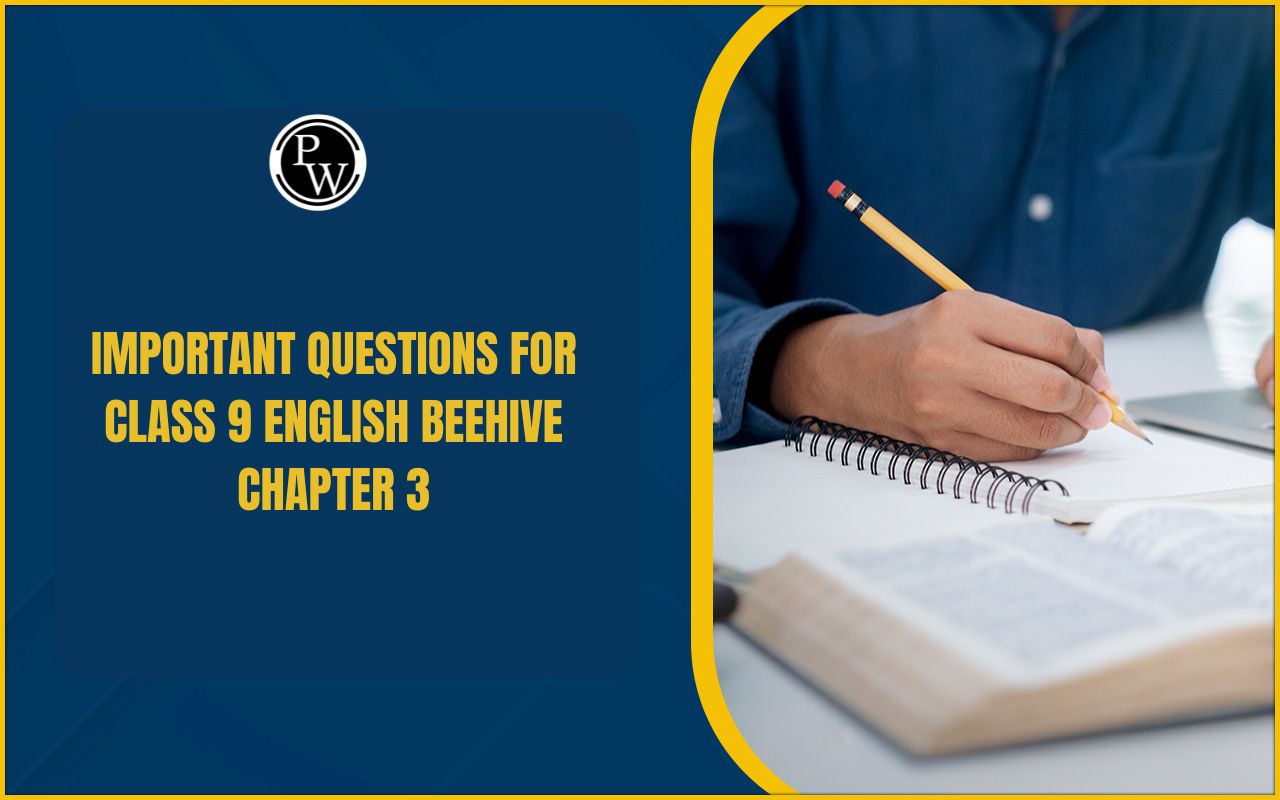
NCERT Solutions Class 9 English Poem Chapter 8: In the NCERT Solutions for Class 9 English Poem Chapter 8, you'll find easy-to-understand explanations for the poem "On Killing a Tree."
This chapter helps you understand what the poet, Gieve Patel, is trying to say in the poem. You'll get clear answers to all the questions asked about the poem. These solutions make it easier for you to grasp the main ideas of the poem, like its deeper meanings and the literary tools used by the poet. By using these solutions, you can improve your understanding of the poem and do better in your English studies.NCERT Solutions Class 9 English Poem Chapter 8 PDF
You can access the NCERT Solutions for Class 9 English Poem Chapter 8 in PDF format by clicking on the link provided below. These solutions provide detailed explanations and answers to help you understand the poem "On Killing a Tree" better. With these resources, you can enhance your comprehension of the poem's themes, literary devices, and overall message.NCERT Solutions Class 9 English Poem Chapter 8 PDF
NCERT Solutions Class 9 English Poem Chapter 8 Reach for the Top here
Here are the solutions for Class 9 English Poem Chapter 8 "Reach for the Top." These solutions help you understand the poem better by explaining the questions asked in it. They make it easier for you to grasp the poem's meaning, language, and techniques used by the poet. Whether you are studying for exams or just want to understand the poem more deeply, these solutions are here to help you. Take a look at the solutions below to improve your understanding of "Reach for the Top."Thinking about the Text
I. Answer these questions in one or two sentences each. (The paragraph numbers within brackets provide clues to the answers.)
Question 1. Why was the ‘holy man’ who gave Santosh’s mother his blessings surprised? (1)
Answer: The 'holy man' was surprised when Santosh's grandmother asked for blessings for Santosh's mother to have a daughter. This was unexpected because in their culture, most people usually seek blessings for having a son. So, the holy man found it astonishing that Santosh's grandmother wanted a daughter instead of a son.
Question 2 . Give an example to show that even as a young girl, Santosh was not ready to accept anything unreasonable. (2)
Answer: Even from a young age, Santosh wasn't willing to accept things that didn't make sense to her. She didn't conform to the traditional way of life and started living life on her own terms right from the beginning. While other girls wore traditional Indian dresses, Santosh chose to wear shorts, showing her independence and willingness to break away from societal norms.
Question 3 . Why was Santosh sent to the local school? (3)
Answer: Even though Santosh's parents were wealthy landowners with the means to send her to prestigious schools, she was enrolled in the local school due to a long-standing family tradition. Despite the availability of resources, Santosh's education was influenced by the customs and practices within her family, emphasizing the importance placed on tradition and adherence to familial norms.
This decision highlights how cultural expectations and family customs can sometimes supersede individual opportunities and aspirations, shaping the course of one's education and life path.Question 4 . When did she leave home for Delhi, and why? (4)
Answer: She left home for Delhi at the age of sixteen because she was determined to pursue a comprehensive education. Recognizing the limitations of her local schooling and aspiring for broader opportunities, she made the bold decision to seek out better educational prospects in the capital city.
This choice reflects Santosh's ambition and commitment to her personal growth and development, illustrating her willingness to step out of her comfort zone in pursuit of a brighter future through education.Question 5 . Why did Santosh’s parents agree to pay for her schooling in Delhi? What mental qualities of Santosh are brought to light by this incident? (4)
Answer: Santosh's parents agreed to finance her schooling in Delhi after she shared her plan to work part-time to contribute towards her education expenses. This incident underscores Santosh's resolute determination to receive a quality education, regardless of the obstacles she faced.
It highlights her clear vision and unwavering commitment to her educational goals, as she was willing to take on additional responsibilities to pursue her aspirations. This episode showcases Santosh's strong sense of initiative and resourcefulness, emphasizing her steadfast dedication to achieving academic success against all odds.II. Answer each of these questions in a short paragraph (about 30 words)
Question 1. How did Santosh begin to climb mountains?
Answer: During her college days, Santosh resided in Kasturba Hostel, which overlooked the majestic Aravalli Hills. From her vantage point, she observed villagers trekking up the hills, disappearing into the vast expanse. Intrigued by their journeys, Santosh resolved to explore the mountains herself. With a spirit of adventure and curiosity, she approached the villagers and requested to accompany them on their climbs.
Question 2 . What incidents during the Everest expedition show Santosh’s concern for her team-mates?
Answer: During the Everest expedition in 1992, Santosh found herself in a critical situation at the South Col, where a climber was facing death. Despite her best efforts, she was unable to save him. However, in the face of adversity, Santosh displayed remarkable courage and compassion.
Recognizing the urgent need for assistance, she selflessly shared her own oxygen supply with another climber, Mohan Singh, potentially saving his life. In this harrowing ordeal, Santosh's quick thinking and selfless actions exemplified her strength of character and commitment to the well-being of her fellow climbers, even in the most challenging circumstances atop the world's highest peakQuestion 3. What shows her concern for the environment?
Answer: Santosh demonstrated her deep concern for the environment by undertaking a commendable initiative after her 1992 Everest expedition. On her way back from the expedition, she took it upon herself to collect an astonishing 500 kilograms of garbage from the Himalayas.
This significant effort reflects Santosh's strong commitment to environmental conservation and preservation. By actively addressing the issue of litter and waste in the mountains, she set an inspiring example of responsible stewardship and highlighted the importance of protecting fragile ecosystems. Santosh's dedication to cleaning up the Himalayas underscores her unwavering commitment to safeguarding nature for future generations to enjoy.III. Complete the following statements.
1. From her room in Kasturba Hostel, Santosh used to _________________. 2. When she finished college, Santosh had to write a letter of apology to her father because _________________. 3. During the Everest expedition, her seniors in the team admired her _________________ while _________________ endeared her to fellow climbers.Answer:
1. From her room in Kasturba Hostel, Santosh used to watch villagers from her room, going up the hill and suddenly vanishing after a while. 2. When she finished college, Santosh had to write a letter of apology to her father because she had got herself enrolled at Uttarkashi without his permission. 3. During the Everest expedition, her seniors in the team admired her climbing skills, physical fitness and mental strength, while her concern for others and desire to work together with them endeared her to fellow climbers.IV. Pick out words from the text that mean the same as the following words or expressions. (Look in the paragraphs indicated.)
1. took to be true without proof (1): 2. based on reason; sensible; reasonable (2): 3. the usual way of doing things (3): 4. a strong desire arising from within (5): 5. the power to endure, without falling ill (7):Answer:
1. took to be true without proof: assumed 2. based on reason; sensible; reasonable: rational 3. the usual way of doing things: custom 4. a strong desire arising from within: urge 5. the power to endure, without falling ill: resistancePart II
Maria Sharapova
Thinking about the Text
Working in small groups of 4–5 students, go back over the two passages on Santosh Yadav and Maria Sharapova and complete the table given below with relevant phrases or sentences.| Points of Comparison/Contrast | Santosh Yadav | Maria Sharapova |
| 1. Their humble beginning | ||
| 2. Their parents’ approach | ||
| 3. Their will power and strong desire to succeed | ||
| 4. Evidence of their mental toughness | ||
| 5. Their patriotism |
Answer:
| Points of Comparison/Contrast | Santosh Yadav | Maria Sharapova |
| 1. Their humble beginning | She was born in the small village of Joniyawas of Rewari District in Haryana. | “My father was working as much as he could to keep my tennis training going.” |
| 2. Their parents’ approach | But, in line with the prevailing custom in the family, Santosh had to make do with the local village school. | “My father was working as much as he could to keep my tennis training going.” |
| 3. Their will power and strong desire to succeed | “And I was supposed to be in Uttarkashi on the twenty-first. So, I did not go back home; instead, I headed straight for the training.” | “When you come from nothing and you have nothing, then it makes you very hungry and determined…” |
| 4. Evidence of their mental toughness | Equipped with an iron will, physical endurance and an amazing mental toughness, she proved herself repeatedly. | “Instead of letting that depress me, I became more quietly determined and mentally tough.” |
| 5. Their patriotism | “Then I unfurled the Indian tricolour and held it aloft on the roof of the world. The feeling is indescribable. The Indian flag was flying on top of the world. It was truly a spiritual moment. I felt proud as an Indian.” | “My blood is totally Russian. I will play the Olympics for Russia if they want me.” |
Thinking about Language
Look at the following sentences. They each have two clauses, or two parts each with their own subject and verb or verb phrase. Often, one part (italicised) tells us when or why something happened. • I reached the market when most of the shops had closed . (Tells us when I reached.) • When Rahul Dravid walked back towards the pavilion , everyone stood up. (Tells us when everyone stood up.) • The telephone rang and Ganga picked it up . (Tells us what happened next.) • Gunjan has been with us ever since the school began . (Tells us for how long he has been with us.)I. Identify the two parts in the sentences below by underlining the part that gives us the information in brackets, as shown above.
1. Where other girls wore traditional Indian dresses, Santosh preferred shorts. (Contrasts her dress with that of others) 2. She left home and got herself enrolled in a school in Delhi. (Tells us what happened after the first action.) 3. She decided to fight the system when the right moment arrived. (Tells us when she was going to fight the system.) 4. Little Maria had not yet celebrated her tenth birthday when she was packed off to train in the United States. (Tells us when Maria was sent to the U.S.)Answer:
1. Where other girls wore traditional Indian dresse s , Santosh preferred shorts. (Contrasts her dress with that of others) 2. She left home and got herself enrolled in a school in Delhi. (Tells us what happened after the first action.) 3. She decided to fight the system when the right moment arrived. (Tells us when she was going to fight the system.) 4. Little Maria had not yet celebrated her tenth birthday when she was packed off to train in the United States. (Tells us when Maria was sent to the U.S.)II. Now rewrite the pairs of sentences given below as one sentence.
1. Grandfather told me about the old days. All books were printed on paper then. 2. What do you do after you finish the book? Perhaps you just throw it away. 3. He gave the little girl an apple. He took the computer apart. 4. You have nothing. That makes you very determined. 5. I never thought of quitting. I knew what I wanted.Answer:
1. Grandfather told me about the old days when all books were printed on paper. 2. After you finish the book, perhaps you just throw it away. 3. He gave the little girl an apple and took the computer apart. 4. When you have nothing, that makes you very determined. 5. I never thought of quitting as I knew what I wanted.Dictation
Read the passage once. Then close your books. Your teacher will dictate the story to you. Write it down with the correct punctuation and paragraphing.The Raincoat
After four years of drought in a small town in the Northeast, the Vicar gathered everyone together for a pilgrimage to the mountain, where they would pray together and ask for the rain to return. The priest noticed a boy in the group wearing a raincoat. “Have you gone mad?” he asked. “It hasn’t rained in this region for five years, the heat will kill you climbing the mountain.” “I have a cold, father. If we are going to ask God for rain, can you imagine the way back from the mountain? It’s going to be such a downpour that I need to be prepared.” At that moment a great crash was heard in the sky and the first drops began to fall. A boy’s faith was enough to bring about a miracle that not even those most prepared truly believed in. (translated by JAMES MULHOLLAND)Answer: Do it yourself.
Speaking
Imagine that you are Santosh Yadav, or Maria Sharapova. You have been invited to speak at an All India Girls’ Athletic Meet, as chief guest. Prepare a short speech to motivate the girls to think and dream big and make an effort to fulfil their dreams, not allowing difficulties or defeat to discourage them. The following words and phrases may help you. • self confident/confidence/sure of yourself • self assured/assurance/belief in yourself • morale/boost morale/raise morale • giving somebody a boost/fillip/lift • demoralising/unsure of yourself/insecure/lack confidenceAnswer:
Good Morning Girls!
It is an honor to address you all from this stage. You definitely have sheer will and determination. That is what has brought you this far. As you proceed with the same passion, I want to iterate that everything you have and all that you will achieve in life will solely depend on your confidence. Believe in yourself and your dreams. Do whatever it takes to accomplish your goals. Never ever doubt your skills. Never let the difficulties discourage you. Never lose trust in yourself just because you had to face a defeat. Whenever you fail, remember to rise and chase your passion. Thank you.Writing
Working in pairs, go through the table below that gives you information about the top women tennis players since 1975. Write a short article for your school magazine comparing and contrasting the players in terms of their duration at the top. Mention some qualities that you think may be responsible for their brief or long stay at the top spot.Top-Ranked Women Players
I. The roll of honour of women who enjoyed life at the summit since everybody’s favourite player, Chris Evert, took her place in 1975.
Answer:
Do it yourself.II. Which of these words would you use to describe Santosh Yadav? Find reasons in the text to support your choices, and write a couple of paragraphs describing Santosh’s character.
contented, determined, resourceful, polite, adventurous, considerate, weak-willed, fearful, independent, pessimistic, patient, perseveringAnswer: Santosh Yadav possesses a remarkable blend of determination, politeness, and adventurous spirit. Her fascination with mountaineers scaling Everest demonstrates her boldness and eagerness for new experiences. Despite her polite demeanor, she fearlessly approaches them to inquire about joining their climb, showcasing her tenacity and courage.
Santosh's considerate nature shines through her willingness to assist fellow climbers on their journey, exemplifying her compassion and sense of camaraderie. Her unwavering determination and strong will to achieve her goals are evident in her relentless pursuit of success, both on the mountains and in life. As a patriot, Santosh finds immense pride in seeing the Indian flag atop the world, describing it as an indescribable feeling that underscores her deep love for her country. Overall, Santosh Yadav's character is defined by her resilience, kindness, and unwavering dedication to her aspirations and her nation.NCERT Solutions for Class 9 English Chapter 8 Poem On Killing a Tree here
Thinking about the Poem
Question 1. Can a “simple jab of the knife” kill a tree? Why not?
Answer: A simple jab of a knife is not enough to kill a tree because trees are resilient and deeply rooted in the ground. They receive nutrients and resources from the soil, enabling them to regenerate even if they are cut down.
Trees have a natural ability to sprout new growth from their roots or branches, making it challenging to completely eradicate them with just a single cut. This resilience and ability to regenerate contribute to the tree's longevity and survival, highlighting the importance of respecting and preserving these essential components of our environment.Question 2 . How has the tree grown to its full size? List the words suggestive of its life and activity.
Answer: The tree has reached its full size by absorbing nutrients from the earth, feeding on its crust, and absorbing sunlight, air, and water over the years.
Words indicating its life and activity include absorbing, feeding, rising, consuming, and sprouting. These words highlight the tree's active role in taking in essential elements from its environment to support its growth and vitality.Question 3 . What is the meaning of “bleeding bark”? What makes it bleed?
Answer: The phrase "bleeding bark" symbolizes the tree being wounded or cut. Similar to how humans bleed when injured, trees release a liquid at the site of a cut, resembling bleeding. This imagery emphasizes the tree's vulnerability and the impact of human actions on its well-being.
By likening the tree's response to being wounded to that of humans, the poet highlights the interconnectedness between nature and human existence, urging readers to consider the consequences of their actions on the environment.Question 4 . The poet says “No” in the beginning of the third stanza. What does he mean by this?
Answer: The poet's use of "No" at the beginning of the third stanza emphasizes the idea that merely cutting or chopping the tree will not bring about its end. This stark negation underscores the tree's resilience and ability to endure despite physical harm.
By rejecting the notion that the tree's existence can be easily extinguished through such means, the poet highlights the tree's strength and vitality, challenging readers to reconsider their assumptions about the permanence of nature. This assertion serves as a reminder of the tree's enduring presence and its intrinsic connection to the world around it.| CBSE Class 9 Maths Syllabus | CBSE Class 9 Science Syllabus |
| CBSE Class 9 Computer Application Syllabus | CBSE Class 9 Hindi Syllabus A |
| CBSE Class 9 English Syllabus | CBSE Class 9 Social Science Syllabus |
NCERT Solutions Class 9 English Poem Chapter 8 FAQs
How can NCERT Solutions for Class 9 English Poem Chapter 8 benefit students?
Can NCERT Solutions help in understanding the deeper meanings of the poems?
How do NCERT Solutions aid in exam preparation for Class 9 English Poem Chapter 8?










